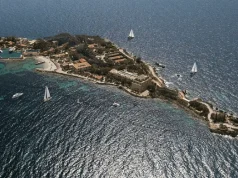In the lush Harran Plain of southeastern Türkiye, a remarkable archaeological transformation is underway. The Taş Tepeler Project—an ambitious initiative spanning 12 Neolithic sites across Şanlıurfa—has reached its fifth year with a wave of groundbreaking discoveries that are reshaping our understanding of early human societies. Thirty newly excavated finds, each offering rare insight into life more than 12,000 years ago, were unveiled during the anniversary celebration at the Karahantepe Visitor Centre.

Among the most arresting artifacts is a human sculpture from Sayburç portraying a deceased figure with a carefully stitched mouth—an evocative clue to ancient ritual practices surrounding death and symbolism. From the renowned UNESCO-listed site of Göbeklitepe, archaeologists introduced another haunting find: a human figure intentionally embedded into a wall as a votive element, demonstrating both spiritual intention and refined artistic skill. Sefertepe revealed its own artistic signatures through two carved human faces, crafted in contrasting high- and low-relief techniques not yet seen at neighbouring sites. And perhaps the most captivating object is a double-sided bead carved from black serpentinite, featuring expressive faces on both sides—an exquisite example of early craftsmanship and symbolic expression.
A Region Rewriting the Story of Early Civilization
“These settlements have opened new horizons in world history,” stated Türkiye’s Minister of Culture and Tourism, Mehmet Nuri Ersoy, during the anniversary ceremony. The statement is anything but hyperbole. Evidence from Taş Tepeler shows that 12,000 years ago, long before agriculture spread widely, people in this region were already living in stable, socially complex communities—challenging long-held assumptions about humanity’s transition from nomadic to settled life.
Ersoy has positioned Taş Tepeler as a future “world capital of the Neolithic,” and the pace of discovery seems to support that vision. While Göbeklitepe has drawn international attention for more than a decade, Karahantepe is quickly emerging as a scientific counterpart of equal importance. Together with ten other sites—Sayburç, Sefertepe, Harbetsuvan, Çakmaktepe, Yenimahalle, Söğüt Tarlası, Mendiktepe, Yoğunburç, Gürcütepe, and the recently added Ayanlar Höyük—this network forms a rare archaeological landscape that is prompting researchers to reconsider one of the least understood eras of human history.

Global Collaboration for a Shared Heritage
The scale of the Taş Tepeler Project is unprecedented. Thirty-six academic institutions—15 from Türkiye and 21 international partners—are working concurrently across all sites, coordinating the efforts of 219 researchers. This unified approach is enabling a holistic reconstruction of the interconnected settlements that flourished here in the early Neolithic.
Conservation is central to the mission. Under the Ministry of Culture and Tourism’s “Legacy for the Future Project,” major restoration efforts are underway. Göbeklitepe’s Lion Structure and Structure C have been fully restored, while significant work continues at Karahantepe’s Structure AD and a domestic building in Sayburç.
Infrastructure is evolving just as rapidly. A new visitor centre at Göbeklitepe and a state-of-the-art research facility with an excavation house at Karahantepe are nearing completion. Once operational, the research centre will serve as the analytical heart of the project, managing all archaeometric studies linked to the region’s finds.
As Taş Tepeler enters its sixth year, each layer of soil and each meticulously preserved artifact brings us closer to understanding the sophisticated communities that thrived here long before the pyramids, Stonehenge, or any written record. These sites capture the earliest sparks of organized society—and reveal that the roots of civilization extend far deeper than once believed.

Sharing Taş Tepeler With the World
Türkiye is also bringing the story of Taş Tepeler to global audiences through high-profile international exhibitions:
- “Göbeklitepe: The Enigma of a Sacred Place” drew more than six million visitors during its six-month run at the Colosseum in Rome (October 2024–March 2025).
- “Built Community: Göbeklitepe, Taş Tepeler, and Life 12,000 Years Ago” will open at Berlin’s James-Simon Gallery from February to July 2026.
- Plans are progressing for additional exhibitions at London’s Guildhall Art Gallery in 2026 and the Tokyo National Museum in 2027.
These international showcases ensure that the story unfolding in southeastern Türkiye resonates far beyond the archaeological trenches of Şanlıurfa.
For further details, visit tastepeler.org/en.





